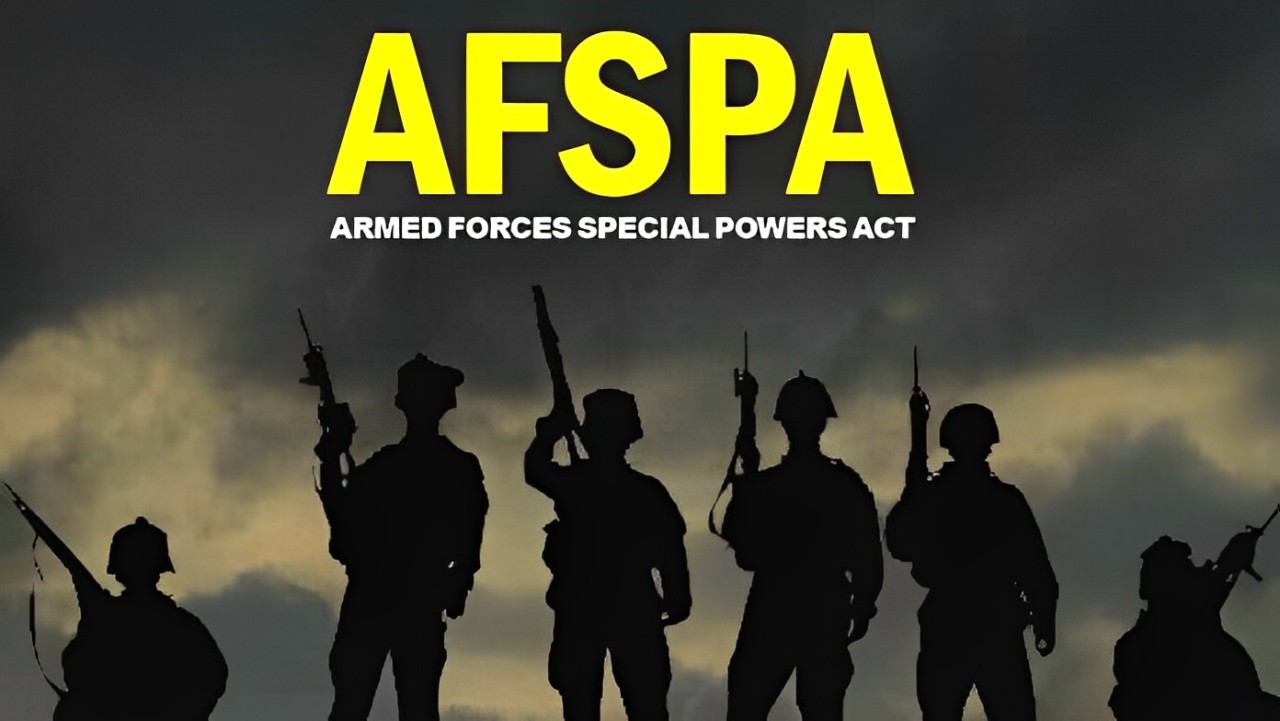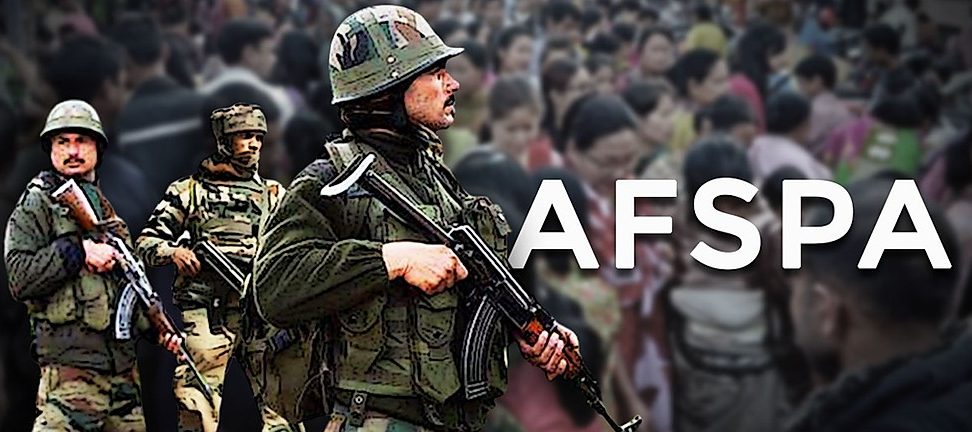. The British colonial government had on August 15, 1942, promulgated the Armed Force Special Powers Ordinance to suppress the Quit India Movement.
. “Assam disturbed areas” was invoked in 1947 to deal with Partition-induced internal security challenges.

The Armed Force (Assam and Manipur ) Special Powers Act, 1958
. The Assam government implemented the Assam Maintenance of Public Order in Naga Hills in 1953 to address insurgents. The Assam Disturbed Areas Act of 1955 provided a legal framework, and Assam Rifles were sent to fight the insurgency in Naga Hills.
. The Naga uprising, led by the Assam Rifles, led to the establishment of the Federal Government of Nagaland in 1956, allowing only the Governors of States and Executives of Union Territories to report locations.
The Special Powers of the Armed Forces (Punjab and Chandigarh) Act, 1983
. The Armed Forces (Punjab and Chandigarh) Special Powers Act was passed in 1983, allowing central military forces to conduct operations in the State of Punjab and the union territory of Chandigarh. The legislation remained largely unchanged, with Section 4 amending to allow forcible vehicle stops and searches.
. The High Court invalidated Section 5, which will enable soldiers to unlock locks withheld by the key to it, despite the Act’s 14-year existence in Chandigarh.
. The AFSPA replaced the Act for wider application. A similar Act specific to Jammu and Kashmir was enacted in 1990.
In September 1990, the Armed Forces (Jammu and Kashmir) Special Powers Act was passed. They may implement this act if the Central Government or the Governor of Jammu and Kashmir believes that all or a portion of the Union Territory is in such a chaotic and hazardous state or weaponry.
How is AFSPA Implemented?
. Section 3 of the AFSPA empowers the Governor of a state and the administrator of a Union Territory (UT) to declare an area “disturbed” and issue an official notification in The Gazette of India to give the center the authority to deploy the “armed Forces in aid of the civil power “
What is a Disturbed Area?
. A government considers an area “ disturbed “ if it perceives a threat to “ public peace and tranquility, because of differences or disputes between members of different religious, racial, language or regional groups or castes or communities.
. The situation is reviewed periodically for an extension for extension of the AFSPA.
Implication of AFSPA
. It says any commissioned officer, warrant officer, non-commissioned officer, or any other person of equivalent rank in the armed forces can for the maintenance of public order “ fire upon or otherwise use force” after giving such due warning as he may consider necessary.

. The Act is said to give unbridled power to the armed force and the Central Armed Police Force deployed in “disturbed areas” to kill anyone acting in contravention of the law arrest and search any premises without a warrant and protection from prosecution and legal suits without the Central government’s sanction.
LIMITATION ON AFSPA
. While the Act gives power to security forces to open fire, this cannot be done without prior warning given to the suspect.
. It says that after the apprehension of suspects, the security force has to hand them over to the local police station within 24 hours.
. It says the armed forces must act in cooperation with the district administration and not as an independent body.
SUPREME COURT VIEW ON AFSPA

-In Naga People’s Movement of Human Rights v Union of India, 1997
– Upheld the law
– State administration view is important
– Law should be implemented temporarily
– Army force should use force cautiously
. In 2016 a verdict by a bench of Justice Madan Lokur and U U Lalit stated that there is no concept of absolute immunity from trial.
CRITICISM OF AFSPA
. “ License to kill”
. A tool of state abuse, oppression, and discrimination. The nation that broke free from colonial rule, continues to use the same laws used by a foreign power on its subjects.
. The United Nations has often pointed out it has no place in Indian democracy. It is against individual freedom and human dignity.
. This has led to psychological consequences , trauma and alienation of the people .
Argument in Favour of AFSPA
. Essential in protecting the border .

. Ensures security in disturbed area
. Effective in countering insurgency and extremist forces
. Sufficient Power to armed forces to tackle the challenges faced by the nation
. It’s only a temporary measure until a situation of normalcy is restored.
What is the present status of AFSPA?
. Currently, AFSPA is enforced in J&K, Assam, Nagaland, and parts of Arunachal Pradesh and Manipur.
. The law has been repealed where insurgencies have decreased and when governments have attained confidence in managing the region using their own police force.
. The centre had removed AFSPA from Tripura a Meghalaya in 2015 and 2018 respectively.

. The centre also partially withdrawn AFSPA from Arunachal Pradesh.
In April 2018, Meghalaya withdrew the Act from a 20-km area along the 885-km boundary with Assam.
Manipur had in 2004 withdrawn AFSPA from seven Assembly constituencies straddling the State capital Imphal following unrest over the custodial death of a woman deemed an extremist.
Tripura in 2015.
In Nagaland, the killing of 14 villagers in Oting, Mon, is seen as having had a telling impact on reviving the demand to repeal AFSPA.
In Manipur, insurgency as well as heavy militarisation have been on the decline since 2012, when the Supreme Court started hearing a PIL on extra-judicial killings.
In Nagaland, all major groups – the NSCN(I-M) and Naga National Political Groups (NNPGs) – are at advanced stages of concluding agreements with the government.
